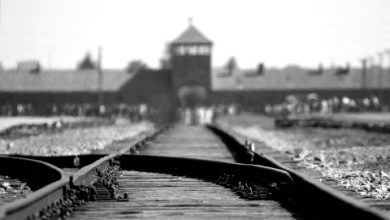The speech titled ‘A More Perfect Union‘ was delivered by then-Senator Barack Obama on March 18, 2008, at the National Constitution Center in Philadelphia, Pennsylvania. At this pivotal point in his presidential campaign, Obama addressed the controversy surrounding his association with Reverend Jeremiah Wright, whose controversial sermons had ignited a national debate about race, patriotism, and Obama’s own beliefs. Senator Barack Obama was a rising star in American politics at the time. By 2008, Obama was a contender for the Democratic Party’s nomination for President of the United States. The speech aimed to address the racial tensions, historical inequalities, and divisive rhetoric that had surfaced during his campaign. It also provided insight into Obama’s personal background, values, and vision for a united America that could transcend its troubled racial history.
A More Perfect Union | Summary & Analysis
Barack Obama’s speech begins with a reflection on a pivotal moment in American history, where a group of men initiated the nation’s experiment with democracy by forming a constitution. It mentions the stain of slavery on the country’s foundation and how this unresolved issue posed a challenge. The passage emphasizes the Constitution’s core ideals of equal citizenship, liberty, justice, and the potential for improvement over time.
Obama shares his unique background as the son of a Kenyan father and a white American mother. He describes the influence of his diverse family members, his education, and his experiences living in different countries. He underscores the concept that the United States allows such diverse stories to exist. Obama discusses his presidential campaign and how he aimed to continue the legacy of working towards a more just, equal, and caring America. It highlights his belief in unity despite differences and his conviction that solving contemporary challenges requires collective efforts. It also addresses how the author’s candidacy garnered support from a variety of Americans, defying racial expectations.
The discussion shifts to the topic of race during the campaign, mentioning instances where the author’s race was questioned. It addresses controversies involving Reverend Jeremiah Wright’s incendiary remarks and Obama’s condemnation of them. It explains that while the author disagreed with some of Wright’s views, he also acknowledged Wright’s positive contributions to his faith and community. He reflects on his experiences at Trinity Church and his relationship with Reverend Jeremiah Wright. He describes the church’s role in merging the stories of ordinary black people with biblical tales, creating a sense of shared history and empowerment. Obama defends his connection with Reverend Wright, acknowledging his imperfections but highlighting the positive impact he had on his faith and life events, and emphasizes the complexity of predominantly black churches like Trinity, where diverse members represent the full spectrum of the black community. He compares his relationship with Reverend Wright to family and asserts that he cannot disown him any more than he can disown his racial heritage.
Obama discusses the issue of race and the importance of addressing it. He argues against simplifying or ignoring the complexities of racial disparities in America. He acknowledges the historical injustices, such as slavery and discrimination, that have contributed to present-day disparities in education, wealth, and opportunities for African Americans. He delves into the anger and resentment that can exist within both the black and white communities, fueled by various factors such as economic struggles, perceptions of privilege, and misunderstandings. Obama suggests that ignoring or condemning these emotions without understanding their roots only widens the divide. He concludes by emphasizing the need to confront these issues honestly and work towards a more unified and just future.
He moves on to discuss how both black anger and white resentment have distracted from addressing underlying issues affecting the middle class, such as corporate greed and political corruption. He acknowledges that racial divisions cannot be easily resolved in a single election cycle, but he firmly believes that America can move beyond its racial wounds and work toward a more perfect union. Obama emphasizes the need to acknowledge and address the legitimate concerns within both the black and white communities. He argues that resentments should not be dismissed, as they are grounded in real grievances. He highlights the importance of self-help and societal change, expressing his belief that progress is possible and encourages a more inclusive approach to problem-solving, advocating for unity across racial lines. Obama discusses the importance of tackling issues like education, healthcare, and jobs together, and emphasizes the interconnectedness of different communities’ struggles.
He challenges the divisive politics of distraction and calls for a collective effort to overcome challenges. He shares the story of Ashley Baia, a young white woman who helped her mother during a difficult time, demonstrating the power of allyship and solidarity across races. He concludes by emphasizing that while this moment may not be perfect, it is where the journey toward a more perfect union begins.
A More Perfect Union | Background
The context of the speech was a critical moment in Obama’s presidential campaign, marked by a controversy surrounding his former pastor, Reverend Jeremiah Wright. Reverend Wright’s controversial sermons, which included statements that were racially charged and critical of the United States, had been widely publicized by the media. These statements led to concerns and criticisms about Obama’s association with Reverend Wright and raised questions about his own beliefs and stance on race. The controversy threatened to undermine Obama’s campaign, and he felt the need to address the issue directly and comprehensively.
Obama acknowledged the controversy surrounding Reverend Wright’s remarks and expressed his strong disagreement with some of the statements. He sought to distance himself from the most inflammatory comments while also acknowledging the broader context of Reverend Wright’s decades-long service and the positive contributions of his church, Trinity United Church of Christ. Obama provided historical context for the racial divisions in the United States. He acknowledged that racial tensions and inequalities were deeply ingrained in the country’s history and that they could not be easily brushed aside. He discussed the legacy of slavery, segregation, and ongoing discrimination that had shaped the experiences of African Americans. Obama shared his own personal narrative to illustrate the complexity of race in America. He highlighted his mixed-race heritage, his upbringing by a white mother and grandparents, and his experiences of bridging racial divides. He spoke about his relationship with his grandmother, who occasionally made racially insensitive comments, and his wife and daughters, who represented a diverse range of racial backgrounds.
He emphasized the importance of finding common ground and unity despite racial differences. He discussed the shared challenges faced by all Americans, such as healthcare, education, and economic opportunities. He argued that addressing these challenges required a collective effort that transcended racial divisions. Obama called for a new approach to addressing racial issues in America. He advocated for an open and honest dialogue about race that acknowledged both the progress made and the work that still needed to be done. He urged Americans to reject divisive politics and work together toward a more just and inclusive society.
Overall, the speech was an attempt to navigate a delicate and complex issue during Obama’s presidential campaign. It provided insights into his personal experiences, beliefs, and vision for a more united and inclusive America. The speech is often remembered as a pivotal moment in Obama’s campaign and as an example of his ability to address challenging issues with thoughtfulness and eloquence.
A More Perfect Union | Rhetorical Analysis
The rich and complicated history of black oratory, religion, and politics, according to Susanna Dilliplane, provided a crucial context for Obama’s speech on March 18 by placing restrictions on what the candidate could say and affecting how his response would be perceived. Obama was faced with a political minefield as a result of these interconnected rhetorical difficulties. According to a close examination of his address, he attempted to overcome the difficulties by constructing his rhetoric around two interconnected ideas that he used to describe American greatness: ‘toward a more perfect union’ and ‘out of many, we are truly one.’ Obama emphasized the importance of the two major topics at the opening of his speech in defining America as a country, his campaign, and himself personally.
Obama developed a cogent and comprehensive message in which his destiny as a candidate became intertwined with America’s destiny of realizing its founding ideals by consistently validating and even embodying (through himself as a person or his campaign) the two themes of ‘toward a more perfect union’ and ‘out of many, we are one.’ The speech primarily strikes a note of consolation by connecting the candidate’s story and that of his race to the longer history of the United States and weaving it into the complex web of racial relations in America as to ‘how racism was permitted to flourish in what was allegedly a democratic union, and how the legacy of that reality has served to divide the country’ eventually making space for the limited reconciliation’. He places his character firmly against the backdrop of how American culture sees himself existing within by arguing that his existence and the greater African American experience are parts of an imperfect organism.
The candidate’s stated position as a symbol of these essential ideas makes them an actuality, rather than only a promise, and is a ‘major implication’ of the address from March 18, especially when viewed in the context of Obama’s language as a whole. Voters were given the opportunity to shape history and were given agency, which is significant because it allowed the country to move closer to its ultimate goal of being a perfect union. It was crucial to connect actualized aspirations with unfulfilled promises. Without the second element, the thematic framework’s electoral usefulness was hindered; with it, Obama created a more compelling reason to support his campaign. In conclusion, the fact that his candidacy represented both the achievement of a nation’s fundamental principles and the mechanism through which the nation could continue on its historic march toward fulfilling its promise is what made the theme framework of the March 18 speech such a strong rhetorical instrument.
According to Raymond Levy, the speech’s bookending of the idea that America must keep its Constitutional promise unites not only its themes of the ongoing process of unity as articulated through oppositional and divisive devices, but also brings the audience together around the idea that each individual must do their part to fulfill the promise of ‘a more perfect union’. Obama creates the sense that the ability to constantly change is its own kind of perfection, or the closest society will get to it and it will take collective will on a small scale to carry out that ideal, just as it took human effort to perfect the union’s abstract goal of equality.
If the speech is seen as a component of a more comprehensive, coherent rhetorical plan, its relevance increases. It wasn’t a stand-alone speech that was unrelated to the rest of the candidate’s talking points; rather, it was a campaign theme-resonating moment that repeatedly emphasized who and what Obama’s candidacy stood for. Obama was able to integrate his specific message on racial relations with the larger rhetorical frameworks that fueled his successful presidential campaign by giving a significant speech on race whose main themes were echoed throughout his campaign rhetoric. As a result, the simmering problems of racial tensions were incorporated into the larger vision of hope and possibility.
The speech remains significant not only for its impact on the 2008 presidential campaign but also for its exploration of race, identity, and unity in the United States. Obama’s ability to navigate this sensitive issue with thoughtfulness and grace contributed to his reputation as a skilled communicator and a transformative political figure.
Citation
Dilliplane, Susanna. ‘Race, Rhetoric, and Running for President: Unpacking the Significance of Barack Obama’s ‘A More Perfect Union’ Speech.’ Rhetoric and Public Affairs, vol. 15, no. 1, 2012, pp. 127–52.
Reymond Levy. 2010. The Unity of Division: A Rhetorical Analysis of Selected Speeches from Barack Obama’s 2008 Presidential Campaign. Master’s thesis. Nova Southeastern University.



